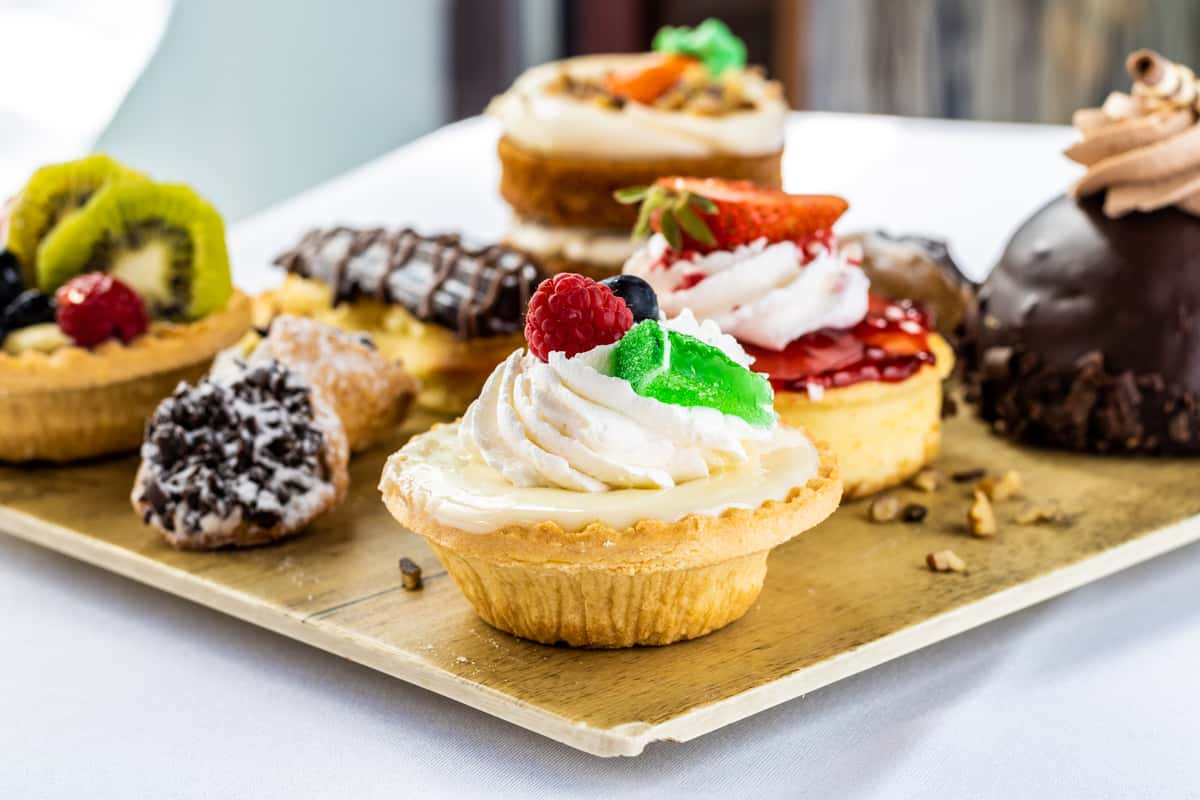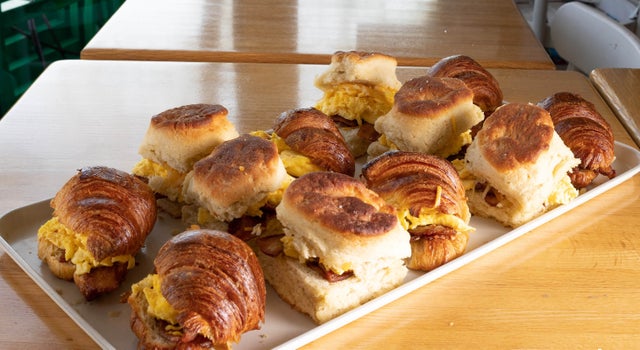Recognizing the Art of Bakery Products: From Freshly Baked Breads to Alluring Pastries and Finger Foods
From the science behind the excellent loaf of bread, where fermentation and gluten growth play crucial duties, to the skill required for producing layered breads, each facet discloses an engaging narrative of workmanship. The versatility of finger foods highlights just how flavor and texture can be skillfully combined to engage diverse preference preferences.
The Scientific Research of Bread Making
At the heart of every loaf of bread lies a remarkable interaction of chemistry and biology. The process of bread making begins with the mix of flour, water, salt, and yeast-- each active ingredient playing a crucial role in the end product. Flour includes proteins, primarily glutenin and gliadin, which, when blended with water, form gluten (Catering Maddington). This elastic network is necessary for capturing gases created during fermentation.
Yeast, a living microorganism, ferments the sugars present in the flour, producing co2 and alcohol while doing so. The carbon dioxide gas produces bubbles in the dough, causing it to rise and establish a light structure. The temperature and humidity throughout fermentation dramatically influence yeast task and, as a result, the bread's flavor and structure.

Mastering Pastry Techniques
How can one achieve the fragile balance of appearance and taste that specifies exceptional bread? Mastering pastry methods requires a deep understanding of active ingredients, techniques, and the science behind them. Basic to this craft is the option of high-grade components-- flour, butter, sugar, and eggs-- each playing a vital role in the end product's taste and texture.
The strategy of lamination, which involves folding layers of dough and butter, produces the desired flakiness in pastries like croissants and smoke bread. Accuracy in temperature is essential, as butter ought to continue to be cool to make sure optimum layers. Likewise, appropriate blending approaches, such as the creaming strategy for cakes, guarantee also consolidation of air and fat, resulting in a light and airy crumb.
Moreover, maintaining the right humidity levels during cooking can dramatically influence the result, making certain that breads rise correctly and achieve that golden-brown surface. Finally, the art of bread likewise requires patience and technique; each effort enhances one's skill and understanding of the complex balance required to produce alluring pastries that delight the detects. Mastery in these techniques eventually identifies a skilled pastry chef from an amateur.
Sorts Of Finger Foods
The globe of cooking delights prolongs past pastries to incorporate a vast array of finger foods, which are commemorated for their ease and adaptability. These bite-sized treats are ideal for celebrations, using an array of tastes and textures that websites satisfy diverse palates.

On the sweeter side, miniature tarts and bite-sized cupcakes supply a wonderful surface to any type of meal, interesting those with a sweet tooth. In addition, cheese and charcuterie boards function as an innovative choice, permitting visitors to personalize their bites with an assortment of meats, fruits, cheeses, and nuts.
Flavor Profiles in Cooking
Cooking is a complex dance of flavor accounts that incorporates wonderful, full-flavored, and umami notes to create an unified experience for the palate. Comprehending these accounts is essential for bakers looking for to raise their creations.
Sweet taste usually acts as the foundation in baked products, with sugars, fruits, and all-natural sweeteners enhancing taste deepness. Active ingredients such as delicious chocolate and caramel present complex sweet notes that can either control you can look here or complement other flavors. On the other hand, savory elements, often found in pastries and breads, supply equilibrium and comparison. Components like spices, natural herbs, and cheeses can change an easy dough right into a complex taste experience.
Umami, regularly forgotten in cooking, plays a significant function in enhancing flavors. Active ingredients such as aged cheeses, fermented items, or even specific nuts add to a mouthwatering depth that improves general preference.
In addition, the interaction of level of acidity from ingredients like buttermilk or citrus enthusiasm can brighten tastes, offering a revitalizing counterpoint to sweetness. By thoughtfully combining these flavor profiles, bakers can craft items that resonate with varied palates, developing an extraordinary culinary experience. Inevitably, understanding taste profiles is vital to development in the world of cooking.
Crucial Baking Devices and Active Ingredients
Comprehending flavor accounts in cooking collections the phase for picking the right tools and active ingredients that facilitate the creation of exceptional baked goods. A reliable collection of cooking pans-- such as sheet frying pans, loaf pans, and cake frying pans-- is vital for accomplishing preferred appearances and forms.
Flour offers as the foundation of the majority of dishes; choosing the best kind-- be it bread, all-purpose, or bread flour-- can substantially affect the outcome. Cooking powder and baking soda are vital for developing lift in pastries and cakes.
Furthermore, including flavor enhancers like vanilla extract, seasonings, and citrus enthusiasm can boost your productions. By guaranteeing access to these fundamental tools and components, bakers can confidently start their cooking trip, crafting a varied range of wonderful baked goods.
Conclusion
Proficiency in bread production, bread prep work, and finger food discussion reveals the complex partnerships between components and processes. Birthday Catering Maddington. Exploring diverse flavor accounts enhances the baking experience, while essential tools and active ingredients supply the structure for success.
Just how can one achieve the fragile equilibrium of structure and taste that specifies outstanding pastry? Basic to this craft is the imp source option of high-grade components-- flour, butter, sugar, and eggs-- each playing a critical duty in the final item's taste and texture.

Understanding taste accounts in cooking sets the phase for selecting the right tools and ingredients that promote the development of phenomenal baked items. Discovering diverse taste accounts enriches the baking experience, while vital devices and components supply the structure for success.